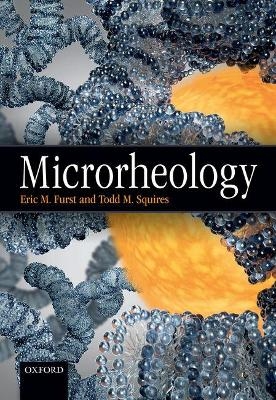
Microrheology
Oxford University Press (Verlag)
978-0-19-965520-5 (ISBN)
This book presents a comprehensive overview of microrheology, emphasizing the underlying theory, practical aspects of its implementation, and current applications to rheological studies in academic and industrial laboratories. The field of microrheology continues to evolve rapidly, and applications are expanding at an accelerating pace. Readers will learn about the key methods and techniques, including important considerations to be made with respect to the materials most amenable to microrheological characterization and pitfalls to avoid in measurements and analysis. Microrheological measurements can be as straightforward as video microscopy recordings of colloidal particle Brownian motion; these simple experiments can yield rich rheological information. Microrheology covers topics ranging from active microrheology using laser or magnetic tweezers to passive microrheology, such as multiple particle tracking and tracer particle microrheology with diffusing wave spectroscopy.
Overall, this introduction to microrheology informs those seeking to incorporate these methods into their own research, or simply survey and understand the growing body of microrheology literature. Many sources of archival literature are consolidated into an accessible volume for rheologist and non-specialist alike. The small sample sizes of many microrheology experiments have made it an important method for studying emerging and scarce biological materials, making this characterization method suitable for application in a variety of fields.
Eric M. Furst is a Professor of Chemical and Biomolecular Engineering at the University of Delaware. Furst received his BS in Chemical Engineering from Carnegie Mellon University and his MS and Ph.D. from Stanford University. Prior to joining the faculty at Delaware in 2001, Furst studied biophysics as a postdoctoral fellow at Institut Curie, Paris. His research interests span a wide range of topics in soft matter science and engineering, but focus in particular on colloid science and rheology. He is the recipient of the 2013 Soft Matter Lectureship Award, the NASA Exceptional Scientific Achievement Medal, and is a Fellow of the American Chemical Society. Todd Squires earned his dual bachelor degree in Physics and Russian Literature at UCLA, then spent a year as a Churchill Scholar at Cambridge University. He earned his Ph.D. in Physics from Harvard in 2002, spent three years as a Postdoctoral Fellow at Caltech, and joined the Chemical Engineering Department at the University of California, Santa Barbara, in 2005. His research group studies small-scale fluid mechanics and soft materials, both experimentally and theoretically, focusing on microfluidic systems, surfactant function and dysfunction in the lungs and in the field, and the manipulation of charges and particles in fluid environments. Honors include the NSF CAREER award, the Beckman Young Investigator, the Camille and Henry Dreyfus Teacher-Scholar award, and the inaugural GSOFT Early Career Award.
1: Introduction
2: Particle motion
3: Passive microrheology
4: Multiple particle tracking
5: Light scattering microrheology
6: Interferometric tracking
7: Active microrheology
8: Magnetic bead mircorheology
9: Laser tweezer microrheology
10: Microrheology applications
Appendix: Useful Mathematics
| Erscheinungsdatum | 06.10.2017 |
|---|---|
| Zusatzinfo | over 230 illustrations/figures |
| Verlagsort | Oxford |
| Sprache | englisch |
| Maße | 181 x 248 mm |
| Gewicht | 1058 g |
| Themenwelt | Naturwissenschaften ► Physik / Astronomie ► Festkörperphysik |
| Technik ► Maschinenbau | |
| ISBN-10 | 0-19-965520-0 / 0199655200 |
| ISBN-13 | 978-0-19-965520-5 / 9780199655205 |
| Zustand | Neuware |
| Haben Sie eine Frage zum Produkt? |
aus dem Bereich


